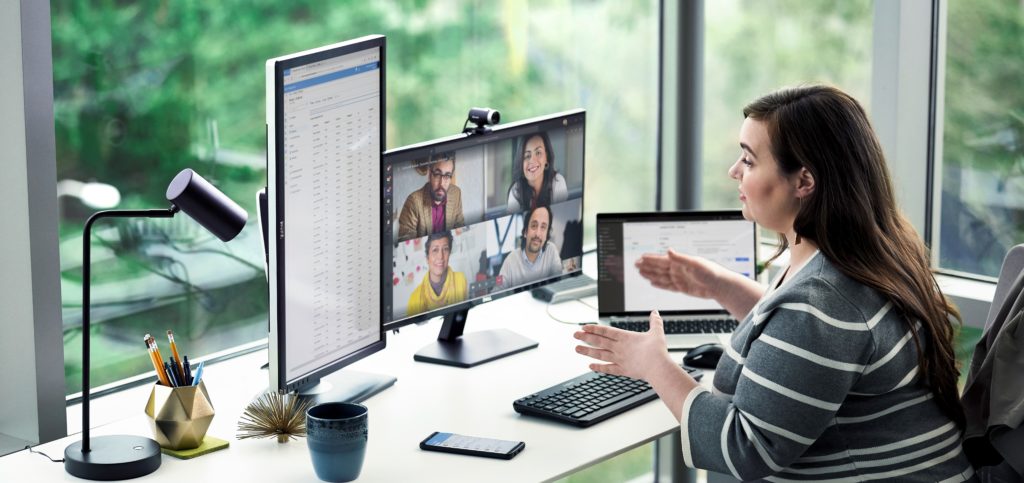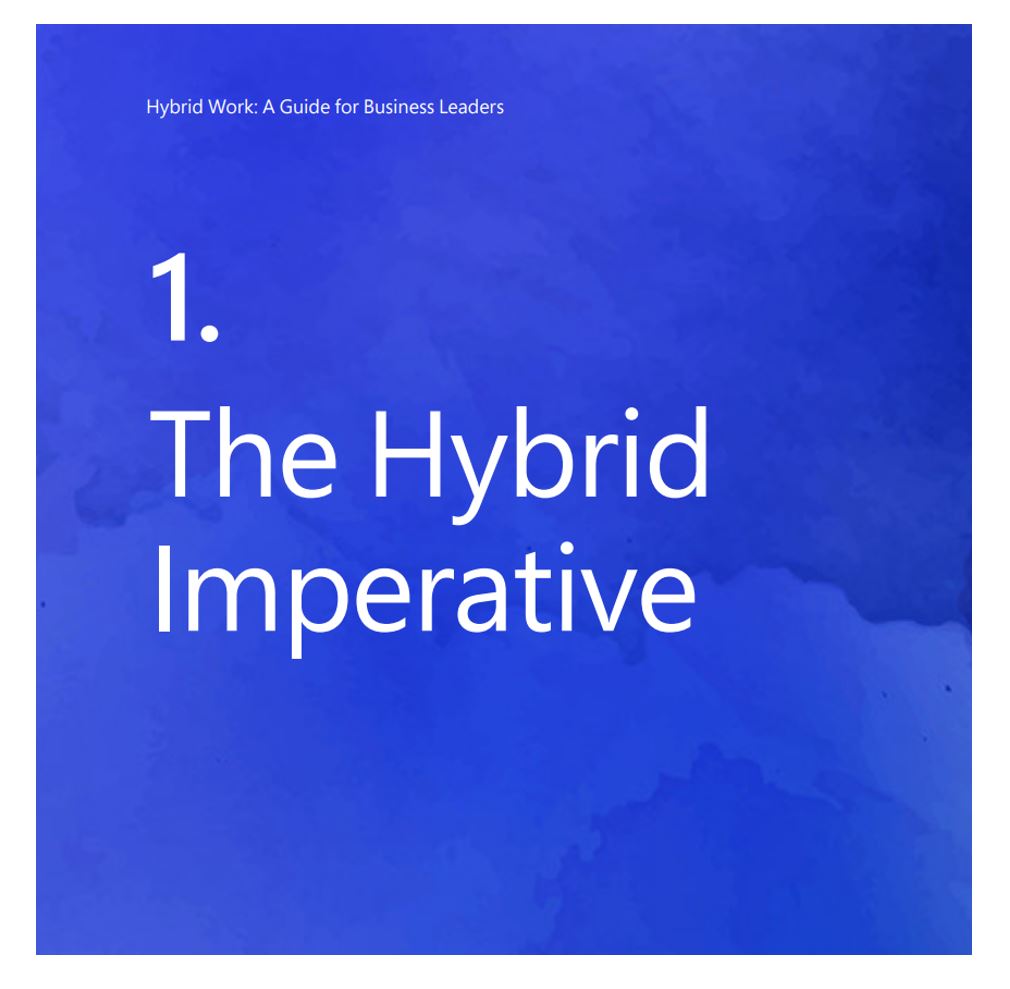Microsoft analyzed data on its newly remote workforce
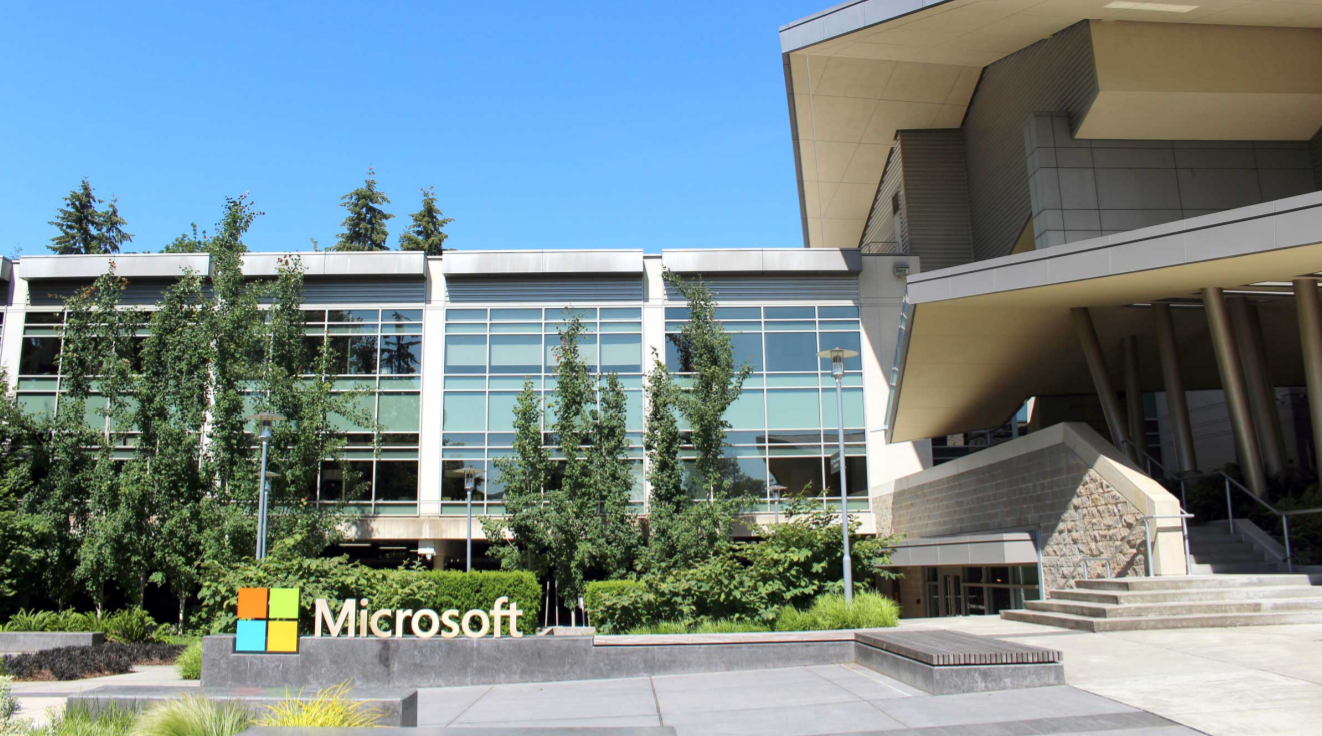
Natalie Singer-Velush, Kevin Sherman, Erik Anderson
Teams that don’t communicate. Market disruption. Unidentified logjams. Employee burnout. Lost efficiency. As part of a group of data scientists, management consultants, and engineers at Microsoft, we help companies harness behavioral data to measure and solve these kinds of challenges—the kinds that firms feel but usually cannot see.
Four months ago we realized that our company, like so many others, was undergoing an immediate and unplanned shift to remote work. We all scrambled to set up home offices, situate newly homeschooled kids, juggle customer calls and cat antics, and, in many ways, rethink how to do our jobs.
At the same time, we knew this was a rare, real-time opportunity to learn something about work itself. We wanted to study how flexible and adaptable it might or might not be, how collaboration and networks morph in remote settings, what agility looks like in different spaces. Maybe most important, we wanted to know how to nurture and improve employee well-being during times of crisis.
So, we launched an experiment to measure how the work patterns across our group were changing, by using Workplace Analytics, which measures everyday work in Microsoft 365, and anonymous sentiment surveys. We didn’t know what we’d find, but we felt certain that it would help us, our partners, our customers, and other organizations navigate the phases of this shift.
Because behaviors in a given scenario are responses to a host of factors, there’s no way to predict the impact an unexpected disruption or crisis will have on how people work. This is the value of measuring it in real time: you can truly see how employees—and, as an extension, a company’s culture—react and adapt. The results might come as a surprise, be counterintuitive, or reveal problems to address and positive trends to replicate. We experienced all three.
Uncovering what has changed about work
For this research, we measured collaboration patterns across our 350-person Modern Workplace Transformation team, based largely in the United States, as well as other groups within Microsoft. We looked weekly at areas such as work-life balance and collaboration by analyzing aggregated, deidentified email, calendar, and IM metadata; comparing it with metadata from a prior time period; and inviting colleagues to share their thoughts and feelings. Often, we were able to find context for the data within the lived experiences of our team. For instance, our research revealed that workdays were lengthening—people were “on” four more hours a week, on average. Our survey shed light on one possible explanation: employees said that they were carving out pockets of personal time to care for children, grab some fresh air or exercise, and walk the dog. To accommodate the breaks, people were likely signing in to work earlier and signing off later.
Our findings aren’t all necessarily good or bad; many have given us a nuanced view into how people are adapting to new demands. For example, while Microsoft salespeople have significantly increased their collaboration time with customers, people in our manufacturing group have focused on streamlining and optimizing connection points with a growing number of supplier contacts. Some revelations turned out to be clear bright spots, like the fact that multitasking during meetings didn’t spike even though people weren’t in the same room. Other insights, like signs of blurring work-life boundaries, are indicators that we want to learn more about going forward. And we’re still digging into the short- and long-term impact of some of the changes—such as the repurposing of commute time for meetings—on our employees, teams, and organization.
Our most fascinating findings can be grouped into a handful of big themes.
When driven by employees, entrenched norms can change quickly.
Measuring collaboration patterns across our 350-person team, we looked at how meetings had changed beyond remote-only attendance. One data point stunned us: the rise of the 30-minute meeting (cue Star Wars music).
While weekly meeting time increased by 10% overall—we could no longer catch up in hallways or by the coffee machine, so we were scheduling more connections—individual meetings actually shrank in duration. We had 22 percent more meetings of 30 minutes or less and 11 percent fewer meetings of more than one hour.
This was surprising. In recent decades, meetings have generally gotten longer, and research shows it has had a negative effect on employee productivity and happiness. Our flip to shorter meetings had come about organically, not from any management mandate. And according to our sentiment survey, the change was appreciated. Suddenly the specter of an hour-long meeting seemed to demand more scrutiny. (Does it really need to be that long? Is this a wise use of everyone’s time?) This is one of the many ways that the remote-work period could have a long-term impact.
Managers get soaked, but they also carry the life preservers.
Through multiple indicators, we learned that managers are bearing the brunt of the shift to remote work. Senior managers are collaborating eight or more hours per week. (Note: An increase in collaboration hours does not necessarily translate to a one-for-one increase in overall work hours. When collaboration increases, other types of work, such as focus and task work, are often dropped to create capacity.) In China, where offices closed weeks earlier than in other countries and where we measured impacts beyond our 350-person team, our manager colleagues saw Microsoft Teams calls double, from 7 hours a week to 14 hours a week. Working to support employees, nurture connections, and manage dispersed teams from home, managers sent 115 percent more IMs in March, compared with 50 percent more for individual contributors.
At the same time, managers are enabling employee resilience through this disruption. Employees across our team saw their work hours spike after the shift. But looking at one-on-one meetings, a key connection point in the manager-employee relationship, we found that the employees who averaged the most weekly one-on-one time with their managers experienced the smallest increase in working hours. In short, managers were buffering employees against the negative aspects of the change by helping them prioritize and protect their time.
This data supports consistent themes we heard from our people: “My manager increased the frequency of one-on-ones. They have been a great way to stay aligned and, especially at the beginning, navigate the shift effectively,” one employee reported.
“The challenges of this time helped me understand the need to get to know my employees better and focus my efforts on their goals,” said one manager.
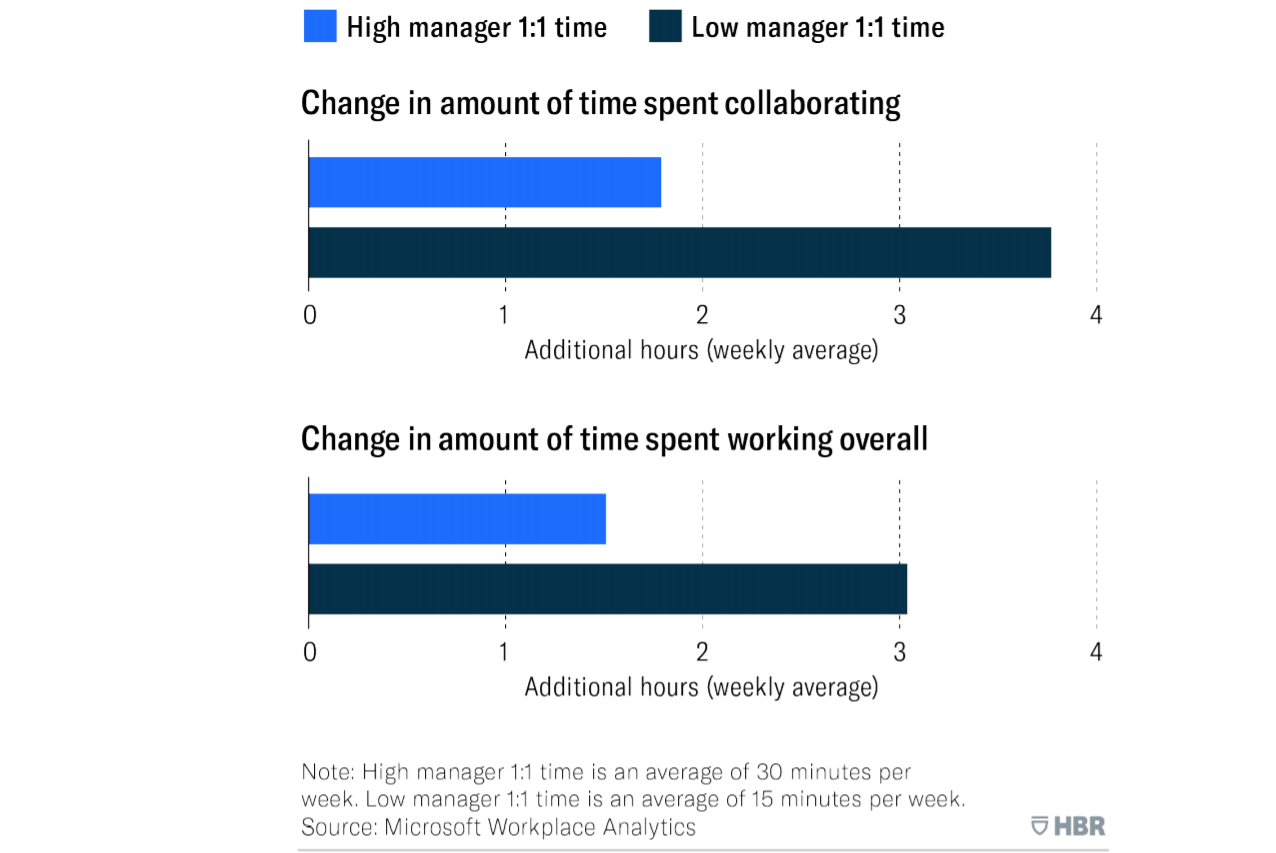
Manager one-on-ones can help contain longer WFH hours
Employees at Microsoft whose managers regularly checked in with them during the early stages of the COVID-19 crisis saw less of an increase in both collaboration hours and general working hours than employees whose managers didn’t.It doesn’t take much for workplace culture to start to shift.
The data we looked at has allowed us to quantify how the rhythms of the workday have changed across our team. For example, just a few months ago many of us could not have imagined spending our commute time anywhere but in our commute. We were used to meetings concentrated in the mornings, breaks at lunchtime, focused work in the afternoons, and a transition back to our personal lives at the end of each day.
When disruption came calling, we found that flexibility was close behind. Most of our team shifted meetings away from the 8 AM to 11 AM window and toward the 3 PM to 6 PM window. As our days became fragmented (“like Swiss cheese,” one employee put it), with more meetings and personal responsibilities to juggle, we leaned on flexibility.
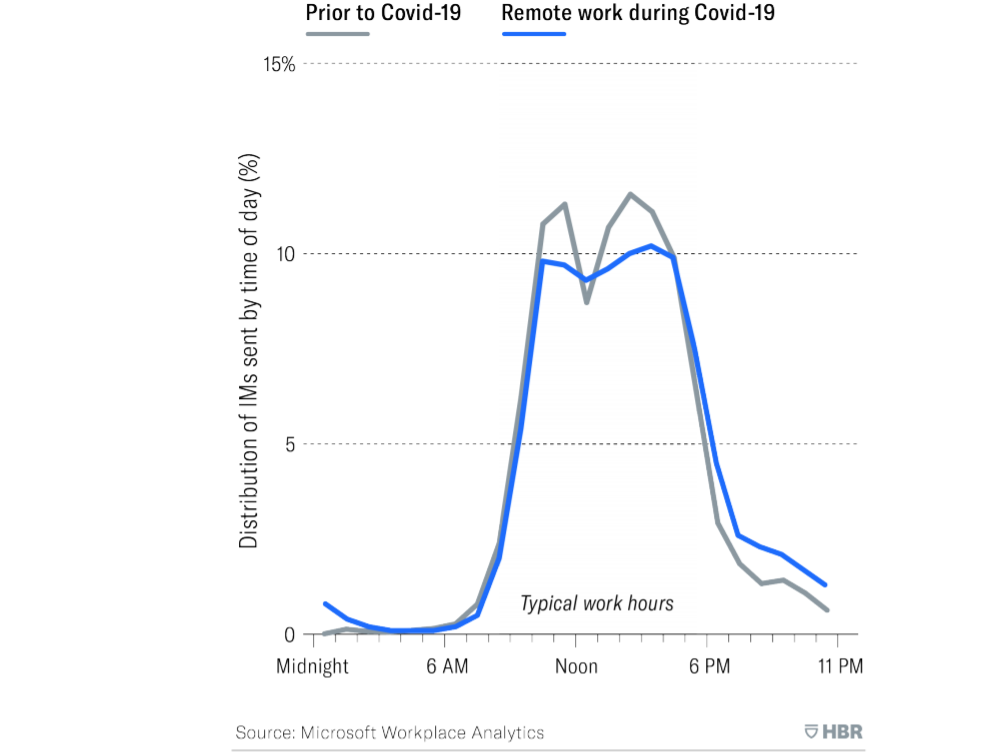
Lunchtime and evenings aren’t a break from screens
Prior to COVID-19, IMs sent by Microsoft employees during their lunch hours dipped. These numbers flattened after WFH became the norm.
Some of the changes we measured might seem inconsequential on their own. But taken together, they reveal a shift in our work culture that was neither intended nor wanted. We will continue to closely monitor these trends.
Human connection matters a lot, and people find a way to get it.
We know that belonging is a core human need and that feeling a sense of connection is an intrinsic motivator. This is why work relationships are so important—strong social connections help employees feel happier and healthier and build stronger networks.
On our team, around Microsoft, and across many of our customers’ companies, a trend cropped up very quickly after the shift to remote work: virtual social meetings. Responding to the lack of natural touchpoints—grabbing lunch in the cafeteria, popping by someone’s desk—employees found new ones. In our group, these ranged from group lunches to happy hours with themes such as “pajama day” and “meet my pet.” Overall, social meetings went up 10 percent in a month.
At the same time, scheduled one-on-ones among employees went up 18 percent, showing that people would sooner add meetings to their schedules than lose connections.
We also measured networks across more than 90,000 Microsoft employees in the United States. Frankly, we expected to see them shrink significantly, given the rapid shifts in environment, daytime rhythms, and personal responsibilities. Instead, we discovered that most employees maintained their existing connections. Even more encouraging, most people’s network size increased. We had assumed that in a time of crisis, employees might strengthen networks within their own work groups in an insular way. In fact, we saw network growth not only within existing work groups but also across different groups, indicating that to adapt and thrive teams sought to build bridges.
Strong social connections help employees feel happier and healthier and build stronger networks.
Taking action in the months and years ahead
Understanding the shifts in people’s behavior and in business as usual was only the first step. The next one—trickier and equally critical—is to figure out which changes we should actively address and course-correct, even as the ground beneath our organization continues to shift. We’ve heard many of our customers express a desire to focus energy on building innovative, resilient frameworks for the future. Fortunately, we know from research on the “fresh start effect” that now is a perfect time to carefully and deliberately reshape our work culture.
In our experience, organizations and leaders who successfully seed change are those who choose to tackle a small number of challenges, maybe even just one, rather than opening up their whole culture to be reimagined. The challenges they choose tend to be the problematic norms that pose the most risk to employee well-being, business continuity, and customer focus. Within Microsoft and among our customers and partners, we’ve seen groups respond to recent behavioral shifts by normalizing manager one-on-ones to help employees gain clarity and connection, increasing small-group meetings to combat the isolation of remote work, and reducing late-night instant messaging to address burnout. One of our customers is using our data to understand which teams are navigating remote work really well, as part of planning for a possible two-year work-from-home scenario.
Our organization and others within Microsoft are also trying creative tactics to support engagement and productivity and to better integrate work and life. One product engineering team has committed to “Recharge Fridays”—days free of meetings so that employees can focus. As an antidote to the “always on” triage mode of remote work, some teams have been intentional about encouraging employees to use their vacation time to unplug and relax. The thread connecting the most successful of these interventions is that they focus on mindset rather than on outcomes. In other words, we asked why people aren’t able to focus, recognized that it’s because free space is too often filled by meetings, and then collectively decided to eliminate meetings on certain days altogether.
As our company and many others plan for what comes next, we’re adjusting the focus of our research to the changes that will be needed to continue supporting organizational health and business continuity. These changes include new processes, policies, tooling, workspaces, collaboration norms, and employee wellness resources. We know the future will be increasingly digital, flexible, and remote-friendly or even remote-first. And as organizations across the globe shift back to the office, measuring patterns of work against a baseline and keeping an eye on how people adapt will be essential—especially if new waves of disruption bring new unknowns. For example, our colleagues in China, who have already moved large parts of their workforces back to the office, are seeing that some of the habits that emerged during remote work, such as more reliance on instant messaging and longer workweeks, have continued even after the return.
We’ve seen groups respond to recent behavioral shifts by normalizing manager one-on-ones to help employees gain clarity and connection, combat the isolation of remote work, and reduce burnout.
Is work today permanently different from what it was before COVID-19 and the work-from-home shift? We don’t know yet, but the data can give us ongoing, real-time information that we can use to influence what happens next. We believe that what we learn about these changes will be key to organizational resiliency in the months and years to come.
The authors thank Abhinav Singh, Microsoft Workplace Intelligence associate, for contributing to this report.
This article was originally published in Harvard Business Review and is shared here with permissions.




